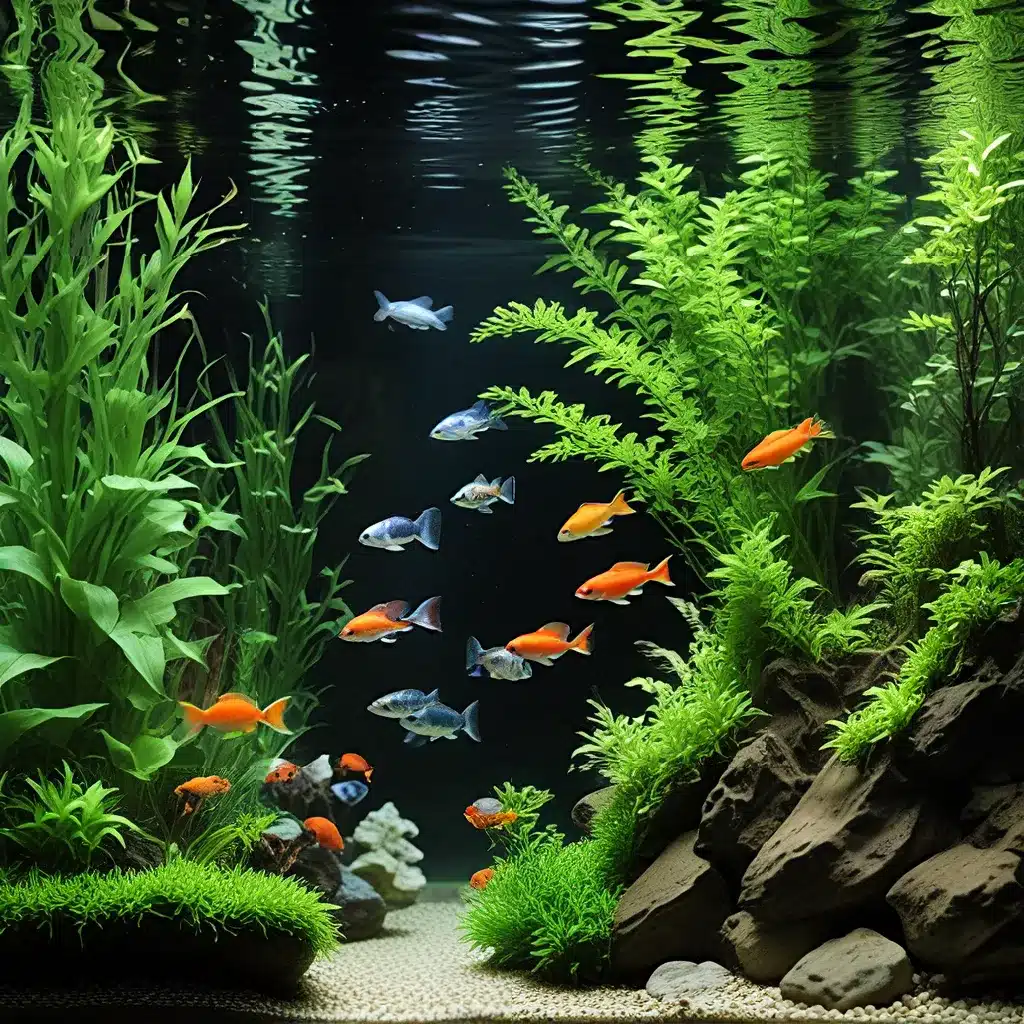
Unlocking the Beauty of Aquascaping
Creating a visually captivating aquarium is a true art form that requires careful planning, attention to detail, and a deep understanding of the natural world. As aquarium hobbyists, we are drawn to the serene beauty of underwater landscapes, the vibrant colors of aquatic plants, and the mesmerizing movements of fish. By harnessing the principles of biophilic design, we can elevate the aesthetic appeal of our aquariums and foster a profound connection between the natural and built environments.
Biophilic design is the practice of incorporating elements of nature into the designed spaces we inhabit. This approach recognizes our innate affinity for the natural world and the measurable benefits it can have on our physical and mental well-being. When applied to aquarium design, biophilic principles can help create captivating underwater habitats that not only delight the senses but also promote the overall health and longevity of the aquatic ecosystem.
One of the key tenets of biophilic design is the concept of “nature in the space.” This refers to the direct integration of living organisms, water features, and natural materials into the aquarium’s design. By carefully selecting hardy, low-maintenance aquatic plants, strategically positioning driftwood or rocks, and incorporating flowing water elements, we can craft aquascapes that mimic the rich diversity and dynamic qualities of natural aquatic environments.
Harnessing the Power of Natural Analogues
In addition to incorporating living elements, biophilic design also emphasizes the use of “natural analogues” – materials, patterns, and forms that evoke nature without necessarily being living organisms. This can be achieved through the strategic use of textures, colors, and shapes that are reminiscent of the natural world. For example, incorporating driftwood with intricate grain patterns or selecting gravel and substrate materials that resemble natural river beds can infuse your aquarium with a sense of organic authenticity.
Another important aspect of biophilic design is the concept of “nature of the space.” This refers to the spatial configurations and visual cues that mimic the qualities of natural environments, such as the interplay of light and shadow, the presence of visual depth and layering, and the creation of a sense of refuge and prospect. By carefully considering the layout and perspective of your aquarium, you can craft a captivating underwater scene that engages the senses and invites exploration.
Cultivating a Balanced Ecosystem
Achieving a visually stunning aquarium is not solely about aesthetic appeal; it also requires a deep understanding of the ecological principles that govern aquatic ecosystems. By adopting a holistic approach to aquarium maintenance, you can create a harmonious balance between the various components of your underwater habitat, ensuring the long-term health and vitality of your aquatic inhabitants.
One of the key factors in maintaining a balanced aquarium ecosystem is the management of water quality. This involves carefully monitoring and regulating parameters such as pH, temperature, and dissolved oxygen levels, as well as employing effective filtration and water circulation systems. By maintaining optimal water quality, you can support the thriving growth of aquatic plants, minimize the risk of disease and pest infestations, and provide a nurturing environment for your fish.
In addition to water quality, the selection and placement of aquatic plants play a critical role in the overall aesthetics and functionality of your aquarium. Carefully chosen plants not only contribute to the visual appeal of your aquascape but also serve as vital components of the ecosystem, providing oxygen, absorbing waste products, and offering shelter and hiding places for your fish.
Integrating Sustainable Practices
As we strive to create visually stunning aquariums, it is essential to consider the long-term sustainability of our practices. This includes exploring eco-friendly filtration systems, implementing water conservation strategies, and prioritizing the selection of hardy, low-maintenance plants and fish species.
One innovative approach to sustainable aquarium design is the use of planted aquarium techniques, which leverage the natural processes of aquatic plants to maintain water quality and reduce the need for constant intervention. By strategically arranging and managing a diverse array of aquatic plants, aquarists can create self-sustaining ecosystems that require minimal maintenance while still achieving a breathtaking visual impact.
Another important aspect of sustainable aquarium design is the responsible sourcing and care of aquatic inhabitants. This involves prioritizing species that are bred in captivity, avoiding the collection of wild-caught specimens, and ensuring that the housing and care conditions for your fish and invertebrates align with their natural requirements.
Embracing the Art of Aquascaping
Aquascaping, the art of designing and arranging aquarium landscapes, is a captivating pursuit that blends creativity, scientific knowledge, and a deep appreciation for the natural world. By embracing the principles of biophilic design and sustainable aquarium practices, aquarists can craft breathtaking underwater environments that not only delight the senses but also contribute to the overall health and vitality of the aquatic ecosystem.
Whether you’re a seasoned aquarium enthusiast or just starting your journey, there are countless opportunities to explore the world of aquascaping and elevate the aesthetic appeal of your aquarium. By immersing yourself in the rich tapestry of aquatic life, you’ll not only cultivate a visually stunning centerpiece for your home or office but also foster a deeper connection with the natural world that surrounds us.
Conclusion
In the ever-evolving realm of aquarium design, the principles of biophilic design and sustainable practices offer a profound and rewarding path forward. By harnessing the beauty of nature, aquarists can create captivating underwater landscapes that not only enchant the senses but also support the long-term well-being of the aquatic life within. As you embark on your aquascaping journey, remember to embrace the art, the science, and the profound connection to the natural world that lies at the heart of this fascinating hobby.
Explore the King Aquarium website to discover a world of inspiration and resources to help you cultivate your own rippling reflections – a symphony of life, light, and natural wonder in the heart of your aquarium.

